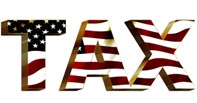A Different Summer
Most of the genealogy clubs take a break for the summer. Most years, I can get a lot of research done during that time. Not this year.
We will take a long trip soon that requires considerable preparation time. I also need to create a digital scrapbook for my DAR chapter. This eats into genealogy time.
My granddaughter offered to help me with the scrapbook. She came over for two afternoons, but that was not nearly enough time to create the book.
Now she is away at camp. I am trying to recall what I have learned from her to create additional pages. I am very slow.
I hope to finish more of it before I leave on vacation. Once we are all back home, perhaps my granddaughter can come over again to edit my work and make it look better.
She has some artistic talent while I do not. She also served on her school yearbook staff where she learned a trick or two about these things.
Meanwhile, no genealogy research is getting done this month.
Continued Search For a Revolutionary War Ancestor
Several weeks ago, I wrote about my quest for additional Revolutionary War ancestors to submit to the DAR. I am still working on this, but the progress is slow.
For now, I have abandoned the research on my Carter ancestors of east Tennessee. I had little luck working out the family tree and tying my known Carters to their parents. This project will take a great deal of time, and I am eager to find an ancestor I can document and submit. So I am moving on for now.
I turned instead to my direct paternal line, the Reeds. I have learned that Caleb Reed (1756-abt. 1835) qualifies for paying the Pennsylvania Supply Tax in 1783, but he also presents some difficulties.
The DAR maintains a list of proven ancestors, but he is not among them. No one else has joined DAR based on his service. Submitting his name would require a high level of proof before they would add him to the list. So far, I have not been able to collect enough information to document his life and connect all the generations.
Perhaps the best candidate for me to work on next is John Carr (1720-1792). He does appear on the DAR list with service in the 3rd Battalion of the Westmoreland (PA) Militia in 1778.
Yet again with him, connecting the generations remains difficult. I need several pieces of information:
- Evidence of all his personal information—birth, marriage, death. Many researchers seem to have his data commingled with another John Carr who served in Maryland.
- Proof that my reported ancestor, Rebecca Carr Reed, was his daughter.
- Proof that my ancestor Caleb Reed married Rebecca Carr.
John Carr lived in Fayette County, Pennsylvania, a county carved from Westmoreland County at the end of the war. I have located his will in the county records. Unfortunately, he included names only for his sons, not his daughters. He referred to them collectively. Darn you, John Carr.
I need another record tying John Carr to Rebecca Carr Reed. Neither John nor his wife Elizabeth lived long enough to file for a Revolutionary War pension.
The common wisdom among genealogists working with 18th-century ancestors is to look at the land records. Most people during that time owned land. They often provide evidence of family relationships.
Family Search has microfilmed the land records for Fayette and Westmoreland Counties, but they do not make them available online.
It looks like a visit to a Family History Center is in my future. I hope some land transactions can provide the evidence I need for the Carr family and perhaps the Reeds, too.
Technology Changes for Genealogy
This post may look different from previous ones on this blog. Changes in technology are affecting my genealogical work.
First off, the blog template in Microsoft Office no longer works. They never notified me that the functionality of this feature would end. Instead, one day when I opened Word to write a post, the blog template had just disappeared.
Luckily for me, my husband/tech advisor was able to find another product that I am trying out with this post.
The second technology change for me may involve using a different genealogy software for my PC. For about 20 years, I have kept my records in The Master Genealogist (TMG). I still like it. But they no longer sell or update this product, and I am afraid it will not be compatible with newer operating systems. We have begun to consider alternatives for keeping our electronic genealogy records.
A possible choice emerged when I attended the 100th anniversary party for the Colorado Genealogical Society earlier this month. I won a free copy of Family Tree Maker software in the door prize drawing. I can get the current version right away, and they will upgrade it free of charge when the next version is released.
I do not want to rush into this. We decided to install Family Tree Make on just one of our computers to try it out.
My husband/tech advisor has numerous exhibits of photos and documents for his family loaded in TMG. We want to see how well they migrate into Family Tree Maker before we make the decision to move all our data and learn to use a new product.
I do not like technology or the electronic age. But I am stuck with it. I am hoping these changes to my accustomed way of doing things will not be too painful.
In Search of Sam
 Samuel H. Reed (1845-1928) was known for having a wanderlust and being less than industrious. Despite years of research by several descendants, we still do not know all the details of his life. I hope to learn more soon.
Samuel H. Reed (1845-1928) was known for having a wanderlust and being less than industrious. Despite years of research by several descendants, we still do not know all the details of his life. I hope to learn more soon.
I am planning a trip to Grant County, Nebraska. Sam appears on the 1910 census there. He was working as hired help on a rural place. I will visit the county courthouse to learn whether he ever owned land there himself.
Sam had been born in Illinois, but he was known to prefer the west. Although he was the oldest son, he did not take over the Reed family farm. He was given money instead.
He used those funds to travel around the west and trade in land. He always lost money, and eventually his inheritance was gone.
Here is what we know about his adult years:
- The family has said he served in the Civil War, but no proof has been found. The 1885 Kansas census says he was a veteran who had enlisted in Illinois and served on pontoons. The 1890 Missouri Veterans Schedule claims he served from Kansas. Neither claim has been verified, and Sam never filed for a military pension. The family story is that he was on a boat that capsized. Although he was saved, his paperwork was lost.
- Sam married both his wives in Illinois: Nancy Jane Dudley in 1869 and Anna Petronellia Sherman in 1883. He took both wives west, living in Kansas with Nancy and both Kansas and Missouri with Anna.
- Sam and his family have not been found on the 1900 U. S. census.
- Sam and Anna divorced in Missouri 1904, and his whereabouts after that become murky.
- Sam was in Grant County, Nebraska in 1910. Two of his children joined him there, and both married into the family that had hired Sam. Two other sons took homesteads in the next county north of Grant County.
- The family tells a story of Sam moving next to Oklahoma and being involved with a woman there. He thought his land might have oil potential and did not want this woman to get her hands on it. He summoned yet another son to assist in protecting it from her. We have not been able to locate where this land might have been.
- Sam returned to Missouri for a time after World War I. By then, he was in his 70’s, and it is unknown how he was supporting himself.
- In the 1920’s, Sam went back to Illinois to live with his eldest daughter, Annie. He developed dementia, and she finally placed him in the Jacksonville State Hospital where he died in 1928. He left $61.09 to each of his nine surviving children. This would work out to a $9750 estate today. Two of the heirs gave their shares to their half-sister Annie to compensate her for taking care of Sam.
My trip to Nebraska will not tell me a lot about Sam’s travels. If he acquired land there, it will help me fill in the timeline of when he arrived there and when he left. It will be another tidbit of information to fills in the story of his life.
Approved!
 This week I received word that my supplemental application to the Daughters of the American Revolution (DAR) has been accepted. It has taken almost two years.
This week I received word that my supplemental application to the Daughters of the American Revolution (DAR) has been accepted. It has taken almost two years.
All applications for membership go to the organization’s headquarters in Washington, D. C. Initial applications take priority and approvals come in a few weeks. The society wants new members. They know that dragging their feet when someone is interested in joining may discourage that person from continuing the process.
Submissions for additional lines of descent take longer to review. Only women who are already members send those in. The approval process for them takes a back seat to the initial applications, and that is why my supplemental took so long.
I joined the DAR in 2021 based on my paternal grandmother’s lineage from Gershom Hall of Massachusetts. He was a private in the militia serving on the coast of Cape Cod. Their mission was to guard the coastline and prevent a British invasion that never came. Because Gershom Hall was already in the DAR database with proven Revolutionary War service, the organization needed only to review my genealogical proof. I was accepted within a few weeks.
The next year, I filed a supplemental application for my paternal grandfather’s ancestor, Robert Kirkham. He was a Virginian who served at Boonesborough, Kentucky. This is the application that took so long to review and approve. Robert Kirkham was also in the database already, but my genealogical proof of descent from him went into the slower pipeline. It took 23 months to receive an answer.
The DAR knows this is a problem. Last week they announced that they have hired 5 additional genealogists to work on the backlog of supplemental applications.
Now I wonder whether I should send in another. I have already done the easiest ones for my family.
I am looking at two possibilities, but I do not know whether I can make a convincing case for either one:
- Levi Carter, Sr. Levi is a proven patriot in the DAR database. The Carters settled in east Tennessee during the Revolutionary War, and many of them, including Levi, Sr., served. But was he my ancestor? I can prove my descent from John Carter (1790-1841), but his parentage is unclear. He may have been a son or grandson of Levi, or perhaps they were related in some other way. Work remains to be done on this line.
- Caleb Reed. He lived in present-day Fayette County, Pennsylvania during the war, but I have no proof of military service for him. He is not in the DAR database. He did, however, pay taxes to support the war effort. That is enough for the DAR to recognize him as a patriot. Other family information for him is lacking, so I need to do some additional research to compile a complete application for him.
If I can pull together a convincing file on either of these men, I plan to submit another supplemental application this year. I wonder how long the approval process will be.
Seminar Season
 Spring brings us genealogy seminars. I have scheduled myself to attend three:
Spring brings us genealogy seminars. I have scheduled myself to attend three:
- 2024 Nebraska State Genealogical Society Annual Conference. This will take place later this month in Columbus. The featured speaker will be Blaine Bettinger, the Genetic Genealogist. He will speak on various topics related to DNA. The conference will also include several breakout sessions of general interest.
- Colorado Palatines to America Spring Seminar. On May 4, Dana Palmer, a well-known genealogist in Germanic research circles, will cover four topics related to Germanic research. This will be an all-day event offered in a hybrid format.
- Colorado Genealogical Society. In lieu of a formal seminar this year, CGS will host a 100th anniversary celebration. James Jeffrey, retired genealogy librarian for the Denver Public Library, will be the keynote speaker at this catered event on May 18.
All three of these gatherings promise to be interesting and worth attending. They will provide useful information and offer opportunities to meet up with other genealogists. My calendar is getting full.
Easter, Old and New
 As Easter approaches, I like to consider how the holiday has changed during my lifetime:
As Easter approaches, I like to consider how the holiday has changed during my lifetime:
- When I was a youngster in North Dakota, I used to accompany my mother to a downtown department store a few days before the holiday. There we would select a new dress, hat, gloves, and white shoes for me to wear on Easter. Many of the other girls in my neighborhood did the same thing with their mothers. Today, the downtown department stores are all gone, and no children wear hats and gloves to church. You do see a lot of spring dresses at Easter.
- Easter Sunday church service was a big deal. Everybody went. In North Dakota with all its Scandinavian settlers, many attended the Lutheran Church. Nowadays, we smile about those people who are C&Es (Christmas and Easter worshippers only), but even their numbers seem to be dwindling. Many people today do not bother to attend church at all on Easter.
- School was out on Good Friday and Easter Monday. This gave us time to travel to visit grandparents for the holiday if we liked. School calendars today have a spring break instead of marking the Easter holiday. Many districts deliberately avoid scheduling their break at Easter so as to avoid the appearance of favoring religion.
- We never had Easter egg hunts. The Easter weather in the places I grew up was often too terrible to have an outdoor activity. Yet even had we lived in a balmy climate, I cannot envision my parents setting up an Easter egg hunt for us.
- We did follow the tradition of the Easter rabbit and colored eggs. I followed this pattern with my own children. After they were grown, my husband and I stopped dyeing eggs, but we have continued the Easter baskets for ourselves. Today, they are typically filled with gourmet candy, and maybe Peeps for him.
- I do not remember having flowers around at Eastertime. My mother and brothers had allergies, and we did not have plants in the house. Today, I always get an Easter lily.
We have made our plans for this year’s Easter celebration. For the first time in several years, I have a new dress. In accordance with modern fashion, I will not accessorize it with hat and gloves. We will attend church without our family because we all belong to different denominations.
The one thing that will provide some continuity with the past is our Easter meal. Family members will come to our house for dinner. As we have since I was a child, we will serve ham and potatoes with lots of side dishes. I am looking forward to it.
Happy Easter, everyone, in whatever way you celebrate.
Caleb Reed’s Revolutionary War Service
 Caleb Reed (1756-abt. 1835) was my 4th great-grandfather in my direct paternal line. I would love to prove that he supported the Patriot cause in the Revolutionary War. Evidence has been elusive even though he was the right age to have volunteered for military service.
Caleb Reed (1756-abt. 1835) was my 4th great-grandfather in my direct paternal line. I would love to prove that he supported the Patriot cause in the Revolutionary War. Evidence has been elusive even though he was the right age to have volunteered for military service.
We know his brother Joshua (1757-1838) served. He was in the Virginia militia although the family lived in what is now Fayette County, PA. The border between Pennsylvania and Virginia was unsettled in 1776.
So far, no record of military service during the revolutionary years has been found for Caleb. This seems strange given his age and his subsequent service as a Captain in Kentucky militia when he was older. I will keep looking for a military record for him.
In the meantime, we know that people supported the cause in other ways. They may have sold supplies to the Army. Some took the Oath of Allegiance.
Last weekend I attended a Daughters of the American Revolution (DAR) workshop for some assistance on finding proof of service for Caleb. The facilitator suggested that I use the Pennsylvania Supply Tax lists. People paid this tax to fund the Patriot Army. Perhaps Caleb paid this tax.
The source she gave me listed the 1783 Supply taxpayers only in Washington County, Pennsylvania. In 1783, Caleb Reed lived in Westmoreland County in an area that was carved out to become Fayette County later that year. I do not know whether the Supply Tax lists for Westmoreland County survive.
My next research task will be to find the Westmoreland County tax records. If Caleb’s name appears there, I will know that he supported the revolution in this way. I could add his name to the DAR’s list of recognized Patriots.
A Family for Mary
 Mary/Polly Templeton (1792-1857) was an early 19th-century woman who moved through various states as they opened for settlement. We know her as a wife and mother, but not as a child. Her parentage and siblings remain unproven.
Mary/Polly Templeton (1792-1857) was an early 19th-century woman who moved through various states as they opened for settlement. We know her as a wife and mother, but not as a child. Her parentage and siblings remain unproven.
Her name first appears on a record in Greene County, Tennessee when she married John Carter on 9 Feb 1815. At least one child, Susan, was born there.
The young family moved on to Wayne County, Kentucky where several more children were born. No Kentucky record with Mary’s name on it has been found.
When settlers began moving into Coles County, Illinois, the Carters were among them. Mary’s name appears a few times in Illinois records. Her gravestone is inscribed with Pioneers of 1830 to honor her and John Carter. Prior to her death in 1857, Mary applied for a War of 1812 pension based on John’s service in that conflict.
None of these records offers any information about her birth family. The pension application tells us that her maiden name was Templeton. A family Bible page gives us her birthdate.
So who were her Templetons? Other researchers place her in different Templeton families:
- Robert Templeton. This man served in the Revolutionary War from South Carolina. Many in Greene County, TN where Mary resided in 1815 were from North Carolina, but this man lived further south. He could have migrated to Tennessee, but so far I have found no record of him there. The South Carolina man had daughters with some of the same names as Mary’s daughters, so it is tempting to say that she was one of this family. Evidence is needed to prove this claim.
- Absalom Templeton. This man married Susanna Carter in Greene County in 1799, seven years after Mary was born. Several researchers claim Mary was a child of this couple, but this does not seem likely to me.
- Joel Templeton. No one else has advanced this claim, but this is my own hypothesis. Several Templetons in addition to Mary were married in Greene County in the early years of Tennessee statehood. All the others were children from one family, that of Joel Templeton. Absalom married in 1799, Catharine in 1802, Jenny in 1802, and Rachel in 1809. It seems reasonable to me that the only other Templeton marrying there, Mary, was also a child of Joel Templeton.
With Absalom eliminated as a candidate for Mary’s father (unless he had an earlier marriage), I plan to collect some more information on the lives of Robert and Joel Templeton. Did either of them live in Greene County, Tennessee? Did either one have a daughter Mary who was born in 1792?
Templeton is not a common name. These people should be traceable. Greene County is the place to begin.
The Hunt for Revolutionary War Ancestors
 My search for another Revolutionary War ancestor continues. So far, I have documented two: Gershom Hall, Private, Massachusetts militia; and Robert Kirkham, Private, Virginia militia who served at Boonesborough, KY. The other candidates in my family lines are much tougher to prove:
My search for another Revolutionary War ancestor continues. So far, I have documented two: Gershom Hall, Private, Massachusetts militia; and Robert Kirkham, Private, Virginia militia who served at Boonesborough, KY. The other candidates in my family lines are much tougher to prove:
- Dunbar. Benjamin Dunbar (1749-bef. 1779) was perhaps living during the early years of the War. His name is not on the DAR patriot list, and I do not know whether this Massachusetts man contributed to the independence effort in some way. The Dunbar family history has few details about him.
- Reed. Caleb Reed (1756-abt. 1835) was the right age to enlist during the war. His brother Joshua did, and Joshua’s name appears on the DAR roster of known patriot ancestors. Caleb’s name does not. I have not found a record of military service for him prior to his move from Pennsylvania to Kentucky well after the Revolution. There he served as a Captain in the Kentucky militia. Did he serve the Revolutionary cause in some other way? Perhaps selling supplies to the troops or taking the oath of allegiance? The hunt for evidence continues.
- Carter. Family lore tells me that John Carter (1790-1841) was the grandson of Levi Carter, Sr. whose name appears on the DAR patriot list. So far, I have found no evidence to prove John’s parentage. Other researchers disagree on whether John is descended from Levi or some other Carter. This was a numerous family in east Tennessee when John was born.
- Templeton. John Carter’s wife was Mary/Polly Templeton (1792-1857). Her parentage, too, is uncertain. Some claim she was also a grandchild of Levi Carter, Sr. through her mother Susanna and Absalom Templeton, but that lineage would mean she was born 7 years before her parents’ marriage. I think that is unlikely. Others claim her father was Robert Templeton. A South Carolina man by that name appears on the DAR patriot list. He did have a daughter Mary, but there is good evidence that she was not the woman who married John Carter.
My search to document all these claims has begun with reviewing what others have already done. I have collected many family group sheets; read family and county histories; and reviewed the online family trees at Ancestry, Family Search, and My Heritage.
Nothing solid has turned up. Now I must formulate a research plan to dig for primary evidence that might lead me to another elusive Revolutionary War ancestor.


